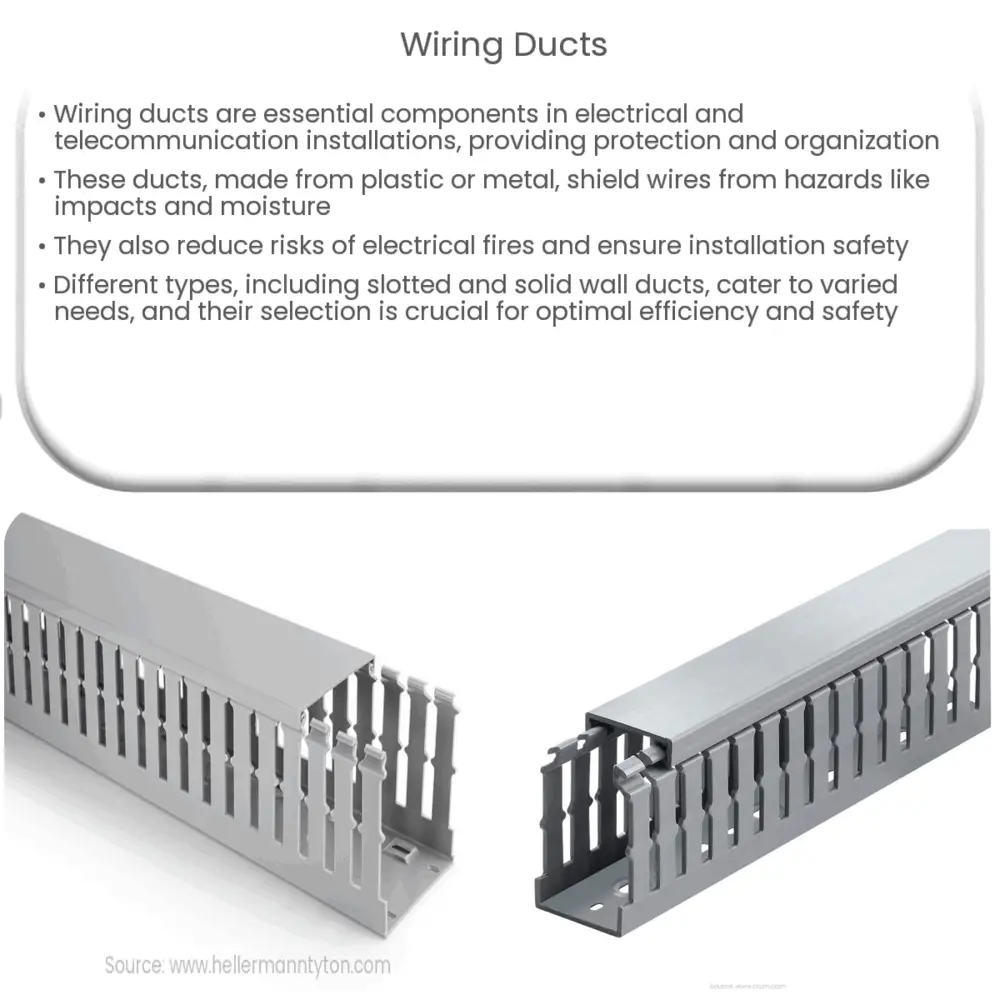Explore the role of wiring ducts in electrical and telecom installations, their types, selection criteria, and future advancements.

Understanding Wiring Ducts: Their Role and Importance
Wiring ducts, also known as cable ducts, are an integral component of electrical and telecommunication installations. They are designed to not only protect wires and cables from external damages, but also to keep them organized, ensuring efficiency and safety.
What are Wiring Ducts?
At their most fundamental level, wiring ducts are trunking systems typically manufactured from plastic or metal. They are essentially conduits or channels designed to house, organize, and protect wires and cables. Wiring ducts come in various types and sizes, catering to different requirements based on the installation environment and the type of wires they are intended to hold.
The Need for Wiring Ducts
The use of wiring ducts is important for several reasons. The primary purpose is to provide physical protection to wires and cables from potential hazards like impact, chemical spills, or environmental conditions such as extreme temperatures and moisture. Moreover, they contribute to the safety of an installation by reducing the risk of electrical fires, which can occur due to frayed or damaged cables.
- Organization: Wiring ducts are crucial for maintaining order in areas with a high density of cables. This not only simplifies the installation process but also makes future maintenance or troubleshooting more efficient.
- Safety: By keeping the cables separate, wiring ducts reduce the risk of electric shocks and short circuits. They also serve to prevent any contact with other potentially dangerous equipment.
- Protection: Wiring ducts protect the cables from physical damage that could occur due to impact, abrasion, or environmental conditions.
Different Types of Wiring Ducts
There are several types of wiring ducts available to meet the diverse requirements of different installations. These include:
- Slotted Ducts: This type is characterized by a series of slots along the length of the duct. These slots allow for cables to be easily added or removed as needed.
- Solid Wall Ducts: These are solid ducts without any slots. They provide maximum protection and are used when wires don’t require regular changes.
- Narrow Slot Ducts: They are similar to slotted ducts but with narrower slots. They are particularly useful when dealing with smaller cables, like in telecommunications or data centers.
The choice of wiring ducts can significantly influence the efficiency, safety, and longevity of any electrical or telecommunication installation. It’s therefore vital to understand the different options available and their respective benefits.
Factors to Consider When Choosing Wiring Ducts
When selecting the right wiring duct for a particular installation, several factors need to be considered:
- Type of Installation: The first consideration is the type of installation – whether it’s a residential building, a commercial facility, or a data center. Each type requires a different kind of wiring duct based on the number of cables and the nature of the environment.
- Material: Wiring ducts can be made from various materials, including plastic, metal, and fiberglass. The choice of material should depend on factors such as the temperature, chemical exposure, and physical impact expected in the installation environment.
- Size: The size of the duct should be chosen based on the number and diameter of the cables it needs to house. It’s essential to leave some space for future additions or modifications.
- Compliance with Standards: It’s crucial to ensure that the selected wiring duct complies with relevant safety and performance standards. This guarantees that the duct is reliable and safe to use.
The Future of Wiring Ducts
As technology continues to advance, the role of wiring ducts is evolving too. Smart wiring ducts, equipped with sensors for monitoring temperature, humidity, and other parameters, are expected to become more prevalent. These smart ducts could automatically alert operators to potential issues, such as overheating, helping to prevent damage or failures before they occur.
Conclusion
In conclusion, wiring ducts play a crucial role in electrical and telecommunication installations, providing protection, organization, and safety for cables and wires. They come in various types and sizes to meet the diverse requirements of different installations. The choice of a wiring duct should be carefully made based on the installation type, the duct material, size, and compliance with relevant standards. As we look to the future, the advancements in technology promise to further enhance the functionality and efficiency of wiring ducts, making them even more integral to safe and effective cable management.

